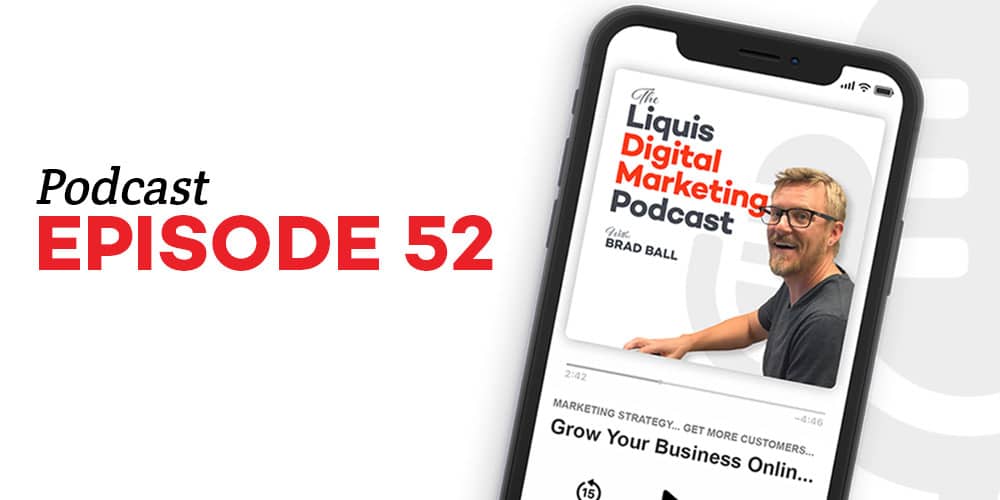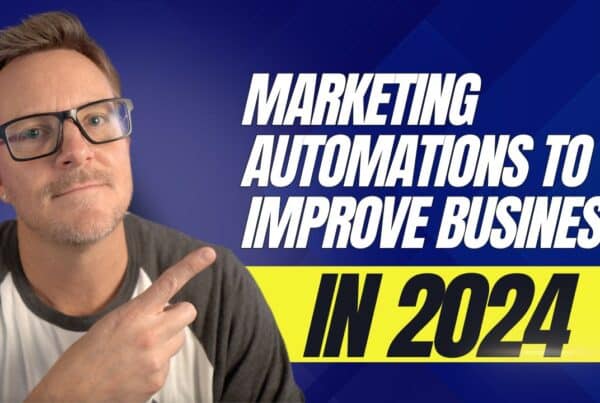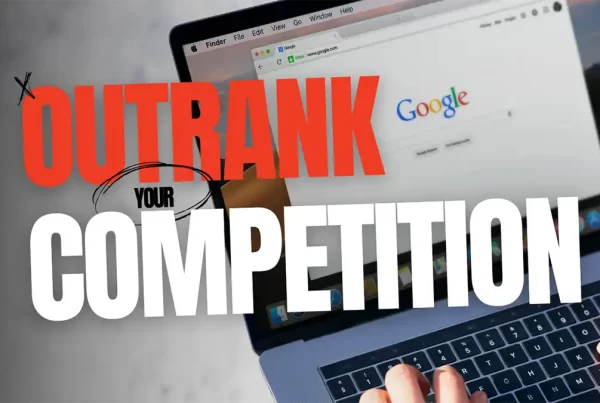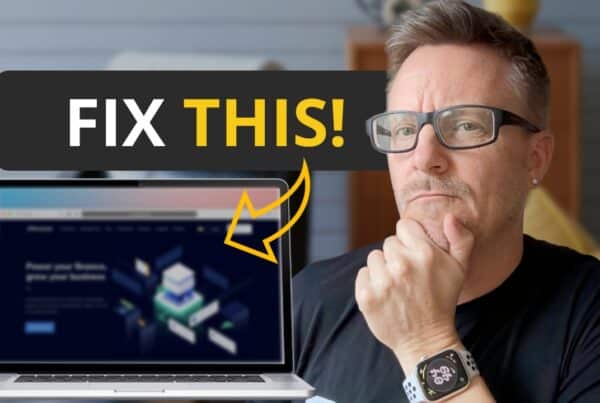Show Notes
Are you automating your business marketing?
When we started implementing these key marketing automations in our business, it changed everything.
In this episode, I’m breaking down what marketing automation is, what marketing tasks you should automate, my personal favorite tools, and examples of killer marketing automations that you can use in your own business.
Discussion Topics:
- What marketing automation is
- What you should you automate
- Automations tools
- Killer marketing automation examples
Resources:
- Ortto (formally known as Autopilot): https://ortto.com
- ActiveCampaign: https://www.activecampaign.com
- Asana: https://asana.com/
- ClickUp: https://clickup.com
- Zapier: https://zapier.com
- Manychat: https://manychat.com
- Buffer: https://buffer.com
- Slack: https://slack.com
Transcription: Episode 52
[00:00:00] Are you using marketing automation in your business? When we started implementing these marketing automations in our business, it changed everything. In this episode, I’m breaking down marketing automation, what you should automate my recommended tools and killer marketing automations that you can use in your business.
[00:00:26] welcome to the Liquis Digital Marketing podcast, where each week we’ll be breaking down complex marketing topics into bite sized steps. You can take now to grow a profitable audience for your business. We’ll discuss organic reach, offer optimization, paid advertising, email marketing, content creation, promotion techniques, and so much more.
[00:00:45] I’m your host, Brad Ball, founder of Liquis Digital, a marketing agency that has helped hundreds of clients of every shape and size reach their business goals since 2008. Thanks for joining us today and be sure to subscribe because you won’t want to miss a beat. Now let’s grow.
[00:01:04] Hello. And welcome back to another episode of the Liquis Digital Marketing podcast. Today, we are talking about marketing automations that you can implement in your business. Before we jump into all of the automations that we’re using first, I want to kind of go over what marketing automation is and why you should really consider using it.
[00:01:24] If you’re not already marketing automation is basically automate. Your repetitive task around your marketing efforts. So as a business owner, you obviously have probably a lot of tasks that you’re having to handle when it comes to marketing. A lot of times you’re probably on when you have time to do it.
[00:01:44] And when you don’t have time to do it and you’re pulled away doing something else, then your marketing begins to lack. So creating marketing automation. Are going to help you stay consistent. And it’s going to automate a lot of these redundant tasks and save you time. So some of the top benefits of implementing marketing automation into your businesses, one is going to save you a ton of time.
[00:02:10] Too. You’re going to create consistency, a big part of being successful in your marketing and in social media is just being consistent. Well, having these automations will allow you to do that. So regardless of what you have going on in your day to day, you know, your marketing automation will handle all of the other things in your marketing efforts.
[00:02:32] Also, it’s going to allow you to create a planned strategy to be executed. So that’s really the hard to implement marketing automation. Without there being some sort of plan involved, it’s going to naturally make you create a. So that is the beauty of really implementing marketing automation. What should you automate in your business?
[00:02:54] Well, maybe you’re automating some things already, so some obvious ones are just like repeatable tasks. So things that you would constantly do with. Something happens. Right? So if someone always is texting you the same question, well, you can create an automation to maybe where they can text a different service and it automatically reply back with some FAQ’s or something like that.
[00:03:18] Right. And we’ll get into more like, tangible things that you can implement, but repeatable. That’s one thing and that’s probably an obvious one. The next one is social posts. So if you’re not already, you should be using a software. There’s a million of them out there. Well, not really a billion, but there’s hundreds of them out there that allow you to upload your social media posts and schedule them for a few weeks or even a month.
[00:03:41] And it’ll publish it out to all of your social media platforms. So this is beautiful, right? Right. You can go into. Get it all set up. You can even pay someone else to do this and they’ll get it all set up and you don’t have to worry about posting every single day. What business owner has time for that?
[00:03:58] The next one is. High level communications, you should automate high-level communications. So I kind of touched on this just a second ago, but so let’s say you have commonly asked questions. Well, obviously you can put a FAQ on your website or what you could do is have some text messaging service where people can text questions or message you from the website or from your social media questions.
[00:04:25] And it can give them an automated response. Or it can drive them to a human as well, but you can have some preloaded common questions that they can get their answers immediately. So that’s kind of automating those high level communications or with email, right? So if someone’s going to email you something, you can automate some responses back to them, which brings us to the next one is automating your email or your SMS or text messages or marketing messages.
[00:04:55] If someone emails you and I don’t necessarily mean like they just directly email your inbox, but let’s say they fill out a form on your website and you know, that can now automate a series of emails or responses or something. And then of course e-commerce, if you have an e-commerce store automating your e-commerce communication.
[00:05:14] When products get shipped or when orders get fulfilled or, you know, all of these things, the transactional things that happen, those should all be automated. And we’ll get into some specifics about like different automations that you should implement to automate these things. So like, how do you go about doing that?
[00:05:31] Right? You need the tools to do. What we use, there’s some common tools that we use the CRMs, like autopilot active campaign, SharpSpring click up, but there’s a ton of them out there. Basically. It’s going to allow you to create automated. When someone takes action, someone texts, you, someone emails, you, they fill out a form on your, on your website.
[00:05:58] They get added into these systems. And then there is a sequence that happens that you can set up to communicate back. So let’s say they email you, or they fill out a form on your way. And the waves a day to reply back with some followup and then waits another two days to follow back. So, you know, that would be what these tools do is they basically allow you to capture their information and set up these automation.
[00:06:26] Those are basically CRMs and there’s a ton of them. And like I said, autopilot, ActiveCampaign, SharpSpring, even MailChimp has automation in it. Some other tools that we like to use is, um, management tools. So Assana and click up. So these are going to allow you to create. Internal marketing processes and automations.
[00:06:50] A lot of times, it’s not always what gets pushed out, but it’s just coordinating with inside of your business of what needs to be done next. Who’s doing what well with a sauna. I know, I know that’s when the one week. What you can do is you can set up this task template when someone completes a task, it automatically assigns it and moves it over to the next person.
[00:07:12] So it kind of like keeps things automated as people are using and checking off the things that they need to do. So a sauna is more of an internal tool. That’s going to help you create a flow and automate your internal flow. All right. The next tool that really comes into play when you’re doing automations for your business, that is Zapier.
[00:07:36] So Zapier is basically the tool that connects other tools together. So if you want to connect your website form to your CRM, I mean, it does everything. You can even connect it to your Google drive. If you put something in your Google drive, then it’ll automatically. Do something else, right? Let’s say someone fills out a form on your website.
[00:07:58] It can obviously send them to a CRM or it can also add them to a sheet in your Google drive. I mean, it can really do anything. There’s so many connections, almost everything connects with Zapier. So that is a big tool. Another one is many chat. So many chat is really just a messaging platform. When you go and you have that little like messaging icon at the bottom of your website, you can even connect it to, you know, so many other things, but this is just an example, but as basically a messaging, it’s not just a message me and I’ll message you back.
[00:08:34] It’s where you can create these automated. Journeys and flows when someone messages, so you can prompt them with questions and they can answer them based off of their answer. They go and get other questions answered or, you know, they have other, it can go in any type of flow. It can then like grab their information and save it off to your CRM.
[00:08:55] You can connect it to Zapier and do anything you want with it. Many chat is really just that messaging. Side of automation and then buffer. I think we talked about this earlier, but buffer is basically the tool you can use to schedule your social media posts. Now that’s one of the top ones as the one we’ve used.
[00:09:13] It’s really good. I recommend that one, but you have to just kind of look and see what they offer and what your needs are. Okay. So those are some tools. Let’s talk about some actual examples of automation. So here’s some, some of the ones we use, one of the more obvious ones, and one I recommend everyone to use is a lead magnet.
[00:09:33] And if you don’t know what a lead magnet is, go back to one of our previous episodes where we talk about lead magnets and how to create them and set them up. But basically you have a lead magnet. Someone is going to fill out your. To get that lead magnet. Then what happens is they go into your CRM such as autopilot or active campaign, and then receive a email nurture sequence.
[00:09:59] Right. That could also be a text messaging in there too. It doesn’t just have to be email, but basically. Once they fill out that form, they’re going to now get an email nurture sequence. And that would typically look like a handful of emails spread out over a, you know, maybe a week of like every other day or every day they get an email and it just gives them value.
[00:10:19] Right. We’re just giving them an email about, you know, our story. And so they can learn more about. I’m trying to build trust and we’re trying to build that likeability and credibility and give them value and be their trusted advisor in whatever service we’re offering. Right. And all of that is then driving toward our call to action, which would be whatever your call to action is such as maybe your course, or maybe it’s your service or whatever it is.
[00:10:47] So that is one automation that if you have a lead magnet, 100%. You need to have this email sequence set up or else you’re missing the boat. Okay, the next one. And we can talk about this earlier too, is the contact form to an email sequence. So if you think about where your buyer or where your potential buyer or customer is at, when they fill out your contact form, you know, where are they at in this buyer journey based off of your service and based off of where they would be when they get to your form and they fill it out.
[00:11:21] What information do they need next? Are they pretty qualified at that point? Or are they not qualified? Now, what you can do is start sending an email sequence of, you know, building that trust and building that qualification and driving them to schedule an appointment. And basically it’s not just a, you get an email and now it’s just in your inbox for you to handle because you have so many other things to do.
[00:11:43] It’s just going to sit in your box. Now you have this lead that you have to follow. What you should do is have an automated sequence that keeps them engaged and keeps them coming back and keeps asking them questions and driving them to your goal. All right. The next one that we use, which I love is your leads to slack.
[00:12:03] Basically how this one works is it’s very similar to like they fill out a contact form. So they’re now like a lead. And they go into my email inbox and they also get an email sequence. But what I love is that also I have it set up to where it goes into our slack channel. So I get a notification. So anytime a lead fills it out, I immediately see I got a slack notification.
[00:12:25] The other beauty of this is it kind of is a fail safe. Sometimes email sucks. Sometimes you don’t get the emails. It just as the nature of emails. Having a slack channel set up for all of your leads to come into. At least you get this notification like, okay, cool. I got this lead. Now I can see what it is.
[00:12:43] Immediate. The next one that we use is with autopilot. Now I do have to say autopilot is in the process of renaming their brand. So I think they are changing the name from autopilot to something else. So if you go looking for autopilot CRM, it might come up as our Turo or something like that. I know they’re in the process of rebranding, but it’s the same thing.
[00:13:06] It’s just a new name. So anyway, autopilot message. Pop-up to your. So this is really creating a user experience within their journey. What this means is let’s say someone fills out our contact form, and now they’re in our autopilot system and it knows it’s tracking them as they’re on our site. And if they come back.
[00:13:27] To our site. Now we can give them a little pop-up in the corner. That’s a personalized message that says, Hey John, thank you for visiting our site or did, Hey John, did you have any questions on that? Download because Hey, we know what they did last time. So we’re giving them a personalized experience based off of what actions they’ve taken.
[00:13:48] Right. So that’s all automated. Another one we use. And a lot of times we’ll use this with our clients, is the contact form submission to a Google sheet, with the use of Zapier. We can basically take anyone that fills out the form on our website, capture them and then send that injury into a Google sheet.
[00:14:07] So then all of our leads can be not just in someone’s inbox, but in whoever has access to this Google sheet. So we can track all of the leads that are coming in. So that’s a great one. If you need to get your leads into a separate place. So this one is kind of a spy technique that I like to use in this is a slack notification.
[00:14:31] When someone visits your website, how we use this as with autopilot, and once they’re in the system, meaning they’ve had to have downloaded something or filled something out. Now we know, and we can track them. And if someone visits our website, so let’s say I’ve sent them a proposal, right? So now they’re flagged in the CRM that, Hey, you know, this person is in the proposal stage and let’s say they come back and visit the web.
[00:14:56] I can get a notification in slack that Hey so-and-so was visiting the website. So now what I could do is at least it gives me that notification, like, okay, I know they’re coming back to get more information. I could send a timely email to them personally, just directly from my inbox and say, Hey, just wanted to check in and see if you had any questions on that proposal we sent over, or I could send them a text or, you know, I can make some action in a timely manner when I know they’re thinking of.
[00:15:23] All right, let’s go to the next one. This one is a really cool one. So this is creating an Assata task. When someone emails, they support inbox. So we have this one set up, so we have hundreds and hundreds of clients that will contact us at any point in time for. Some updates or whatever they want to do.
[00:15:43] And instead of just coming into my inbox and then me having to deal with that, what we’ve done is directed them to a support email inbox. Now, when someone emails into this inbox, then it will automatically create an assign a task and assign. To the person that handles the support tickets. So it automatically creates this support, help in this ticket with all of their information.
[00:16:10] So it goes right to the person. It doesn’t sit in my inbox, it doesn’t sit in someone else’s inbox. It goes right into our system. Okay, let’s go over some e-commerce examples. If you have any commerce stores, you should absolutely have these setup. Number one is an abandoned cart sequence. So if someone goes and add something to their cart and doesn’t check out an hour later, they should be receiving a text or an email and, or both with some incentive or reminder to continue forward.
[00:16:40] That’s an abandoned. And those can be set up with any of these automations. Even if you’re using Shopify, they haven’t even built in some other ideas is a refill reminder. So if you have a consumable product, then they’re going to need refills. So however, the frequency is of your refill. So if it’s about a month to consume it, then every 30 days sending them a reminder email to refill their order.
[00:17:05] This is marketing automation. Let’s say. They made a first order and they haven’t made a second one. Well, with autopilot, you can track that and then you can nudge them for the second order. Hey, we noticed you made an order and haven’t come back in a while. Here’s a 10% off discount for your second order.
[00:17:24] And then of course, your general welcome email, right? So if someone purchases from you welcome them to your family and your business with a nice, welcome email. Okay. We’re getting close to the end here. Messenger bots. Within the last two years, there’s been some huge increases to the abilities of these artificial intelligence and what they can do with messenger bots.
[00:17:48] You can set them up to basically answer your common questions. And I know we kind of talked about this earlier, but. You know, the use of many chat, you can create these really advanced journeys. You can use these AI messenger bots to automatically like, have some intelligent conversation with people to answer questions and to get people where they need to be to purchase or sign up or take whatever action you want them to do.
[00:18:16] The next thing that you should be automating in your business. And this is where a lot of people don’t even think about. And that is your Google analytics reporting. If you’re doing any form of marketing, You should at least be tracking what’s happening and you should have Google analytics connected to your website.
[00:18:37] This is one of the top tools to track what people are doing on your website, unless you are logging into Google analytics on a weekly or monthly basis to see how things are going. You’re probably have no idea. You can very easily have Google analytics send you the reports that you would like to see.
[00:18:58] And if you don’t know how to get those sets, You could probably just easily find someone to do that for you. Well, not probably. You can go to Fiverr, go to Upwork. There are a bunch of people that can easily just give them. You’d have to give them access to your Google analytics account and then they can go in, they can set up the reports.
[00:19:17] You can just tell them what you want to see. And they all said, oh, Those reports and then have them email you a PDF, and that is automated every week or every month. However you set it up and then at least you get these reports and you can see what’s working and what’s not working. And if you really want to get advanced, you can set up Google data studio, where you can create your own graphs and charts.
[00:19:39] And that is probably a pretty daunting task just for the average business owner. I would recommend if you want to do that, you know, reach out to somebody that is able and has the abilities to go in and do that for you. But with that, you can easily have those emailed to you as well. Okay. That was a lot marketing automations that will completely change your business.
[00:19:59] I hope you are able to implement some of these in reap the benefits that we have. It’s going to create consistency. It’s going to save you a ton of time and it’s going to allow you to. To create a strategy and measure what’s working. Let me know what questions you have and as always thank you for being here.
[00:20:19] We appreciate you and we’ll see you next time. Thanks for listening in today. I hope you enjoyed the show and Hey, if you did, please take a second to leave a review and share this episode with someone who you think might also benefit from it. I appreciate you so much. And as always, we’re here to help. If you have any questions about this.
[00:20:37] Or want to talk strategy with us about your own project? Just shoot us an email to info at Liquis Digital dot com and we’ll catch you in the next episode.




